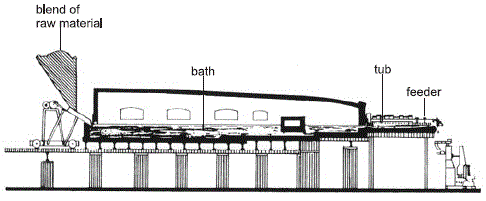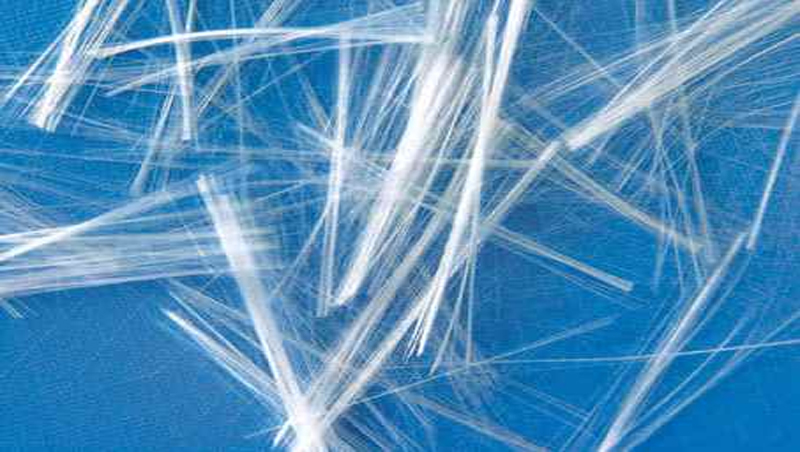Glass fiber also called fiberglass. It is material made from extremely fine fibers of glass Fiberglass is a lightweight, extremely strong, and robust material. Although strength properties are somewhat lower than carbon fiber and it is less stiff, the material is typically far less brittle, and the raw materials are much less expensive. Its bulk strength and weight properties are also very favorable when compared to metals, and it can be easily formed using molding processes. Glass is the oldest, and most familiar, performance fiber. Fibers have been manufactured from glass since the 1930s.
Types of Glass Fiber
As to the raw material glass used to make glass fibres or nonwovens of glass fibres, the following classification is known:
1. A-glass: With regard to its composition, it is close to window glass. In the Federal Republic of Germany it is mainly used in the manufacture of process equipment.
2. C-glass: This kind of glass shows better resistance to chemical impact.
3. E-glass: This kind of glass combines the characteristics of C-glass with very good insulation to electricity.
4. AE-glass: Alkali resistant glass.
Generally, glass consists of quartz sand, soda, sodium sulphate, potash, feldspar and a number of refining and dying additives. The characteristics, with them the classification of the glass fibres to be made, are defined by the combination of raw materials and their proportions. Textile glass fibres mostly show a circular.
Properties of Glass Fiber
Glass fibers are useful because of their high ratio of surface area to weight. However, the increased surface area makes them much more susceptible to chemical attack. By trapping air within them, blocks of glass fiber make good thermal insulation, with a thermal conductivity of the order of 0.05 W/(mK).
The strength of glass is usually tested and reported for “virgin” or pristine fibers those which have just been manufactured. The freshest, thinnest fibers are the strongest because the thinner fibers are more ductile. The more the surface is scratched, the less the resulting tenacity. Because glass has an amorphous structure, its properties are the same along the fiber and across the fiber. Humidity is an important factor in the tensile strength. Moisture is easily adsorbed, and can worsen microscopic cracks and surface defects, and lessen tenacity.
In contrast to carbon fiber, glass can undergo more elongation before it breaks. There is a correlation between bending diameter of the filament and the filament diameter. The viscosity of the molten glass is very important for manufacturing success. During drawing (pulling of the glass to reduce fiber circumference), the viscosity should be relatively low. If it is too high, the fiber will break during drawing. However, if it is too low, the glass will form droplets rather than drawing out into fiber.
Glass Fiber Manufacturing Processes
After the initial process of melting glass and passing it through spinnerets, continuous filaments or staple fibers of glass are manufactured by two different methods.
Continuous Filament Process
In this process, continuous filaments of indefinite length is produced. The molten glass passes through spinnerets having hundreds of small openings. These strands of multiple filaments are carried to winder revolving at very high speed of more than 2 miles per km. This process draws out the fibers in parallel filaments of the diameter of the openings. A sizing or a binder is applied to facilitate the twisting and winding process and to prevent breakage during yarn formation. After winding, filaments are further twisted and plied to make yarns by methods similar to those for making other continuous filament yarns. The sizing is removed through volatizing in an oven. These yarns are used for making such items as curtains and drapes.
Staple Fiber Process
Fibers with long-staple qualities are manufactured through staple fiber process. There are many methods for producing such fibers.
In one of such methods, the molten glass flows through the small holes of bushing, where jets of compressed air shake the thin streams of molten glass into fine fibers. These fibers vary in length ranging from 8 to 15 inches. The fibers fall through a spray of lubricant and a drying flame onto e revolving drum where they form into a thin web. These fibers in the form of web are gathered from the drum into a sliver. Yarn is then made from this sliver by similar methods that are adopted for making cotton or wool yarns. These yarns are used for fabrics for industrial purposes where insulation is required.
In yet another method, the ends of the glass rods are melted from which drops of glass fall away drawing off glass filaments after them onto a speedily revolving cylinder where they are wound parallel to each other. A web of sliver is formed if the cylinder moves sideways. Sometimes, the staple may be thrown off the cylinder onto a stationary sieve where it forms a sliver. In either conditions, the sliver is then converted into spun yarn.
The staple fiber, if subjected to oven, is compressed to the desired thickness and the binder which was earlier applied, is cured. This permanently binds the fibers.
Production:
The subsequent manufacture of glass fibres may be executed to the direct melting process. However, in most cases glass rods or balls are made first which then may undergo a variety of further processes.
Nozzle-Drawing:
As can be seen in Fig. 1-50, the glass fed in is melted in a heated melt tub at 1250–1400oC. Then, it emerges at the bottom of the melt tub from nozzle holes of 1–25 mm diameter and it is taken off and drawn. The filaments solidify and are finished and wound. One can find them in the shops as various kinds of “glass silk”. To make them into webs, the filaments are cut to length (mostly, between 6 and 25 mm).
 Manufacture of glass melt
Manufacture of glass melt

Processes to make glass fibres
Nozzle-Blowing:
The same as with nozzle-drawing, glass balls are melted in the tub. The melt emerging from the nozzle holes is then taken by pressed air, which draws the liquid glass so as to make fibres of 6–10 um diameter. A fluttering effect is caused by the flow of pressed air, which results in fibres of lengths from 50 to 300 mm. A lubricant is put on and the fibres are laid down on a sieve drum which sucks them in. The dry web received is held together by the long fibres, the short ones lying in between them as a filling material. Then, the slivers of glass fibre material are cut.
Rod-Drawing:
By means of a burner, bundles of glass rods are melted at their bottom ends. This results in drops which, as they fall down, draw filaments after them. The filaments are taken by a rotating drum, a squeegee laying them down onto a perforated belt. Thus, a dry web is received which can be wound as glass fibre slivers. – Machine performance being limited by the number of glass rods fed in, the rotating drum may be combined with nozzle-drawing, which results in drum-drawing. This multiplies machine performance. The dry web is again laid down onto a perforated belt and solidified or, after winding it so as to receive slivers, cut for further processing on machines producing wetlaid nonwovens. Using and processing glass fibres is not without any problems. For example, fine pieces of broken fibres may disturb if the work place is not well prepared for the purpose. Using the nonwovens to manufacture glass-fibre reinforced plastics, it is important the surface of the plastic material is fully even. Ends of fibre looking out may be pulled out or loosened by outward stress (temperature, gases, liquids), which may influence material characteristics. In some cases, it is
advisable to cover up such layers of glass fibre with suitable chemical fibres.

